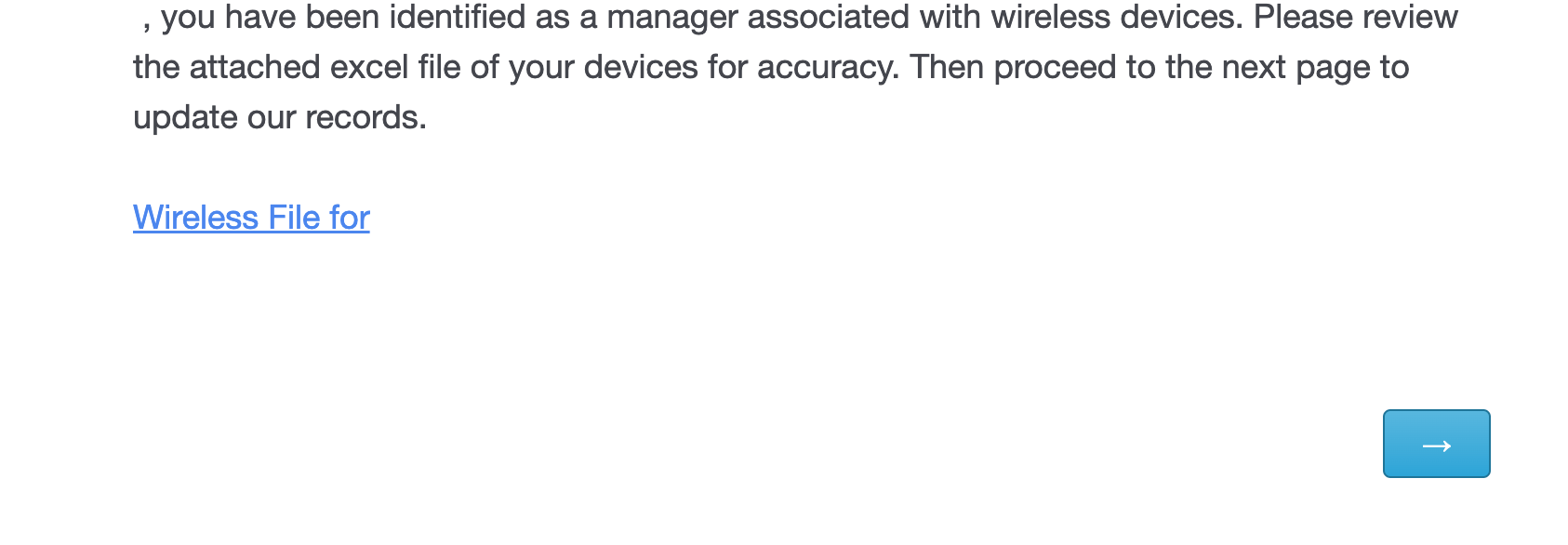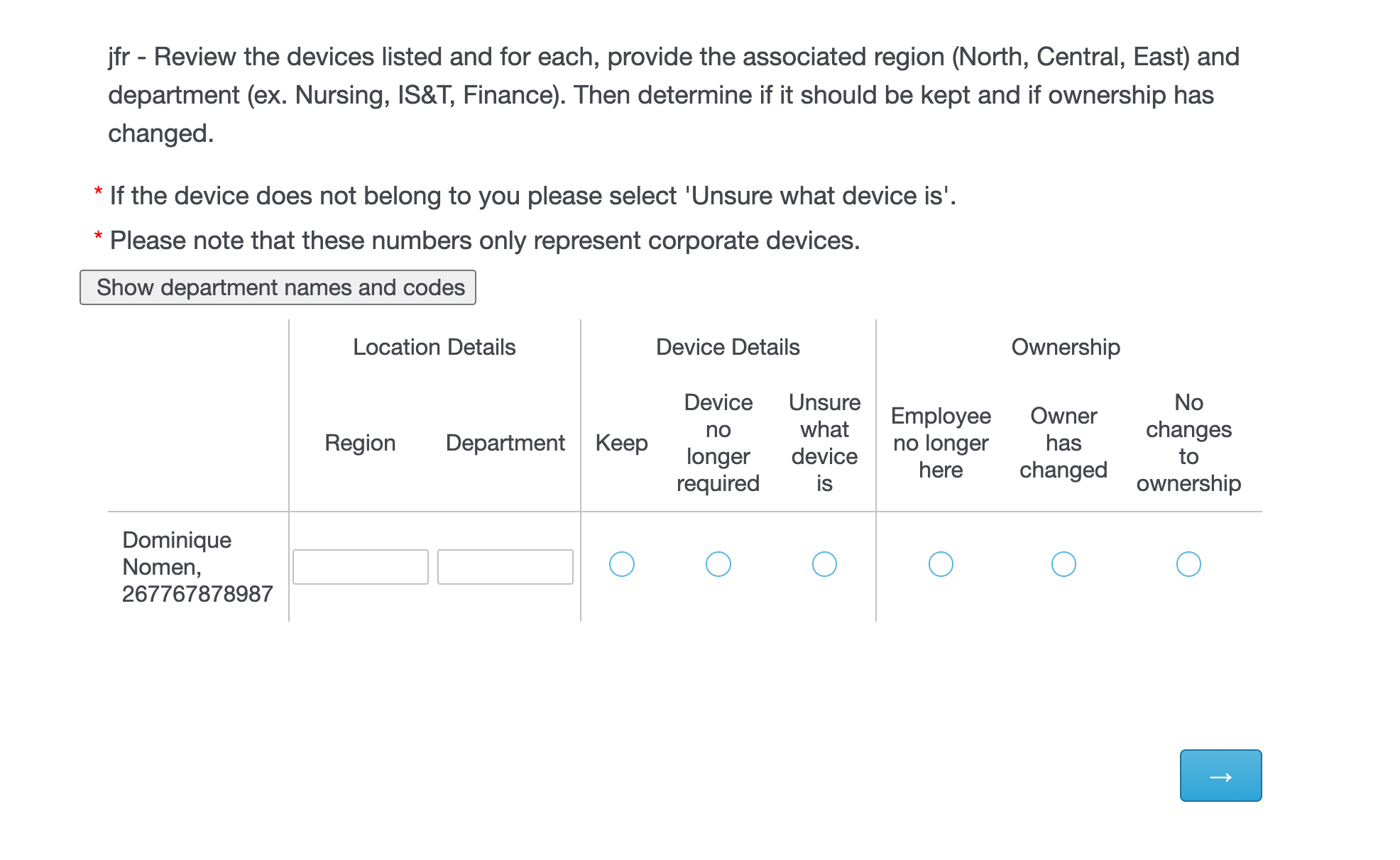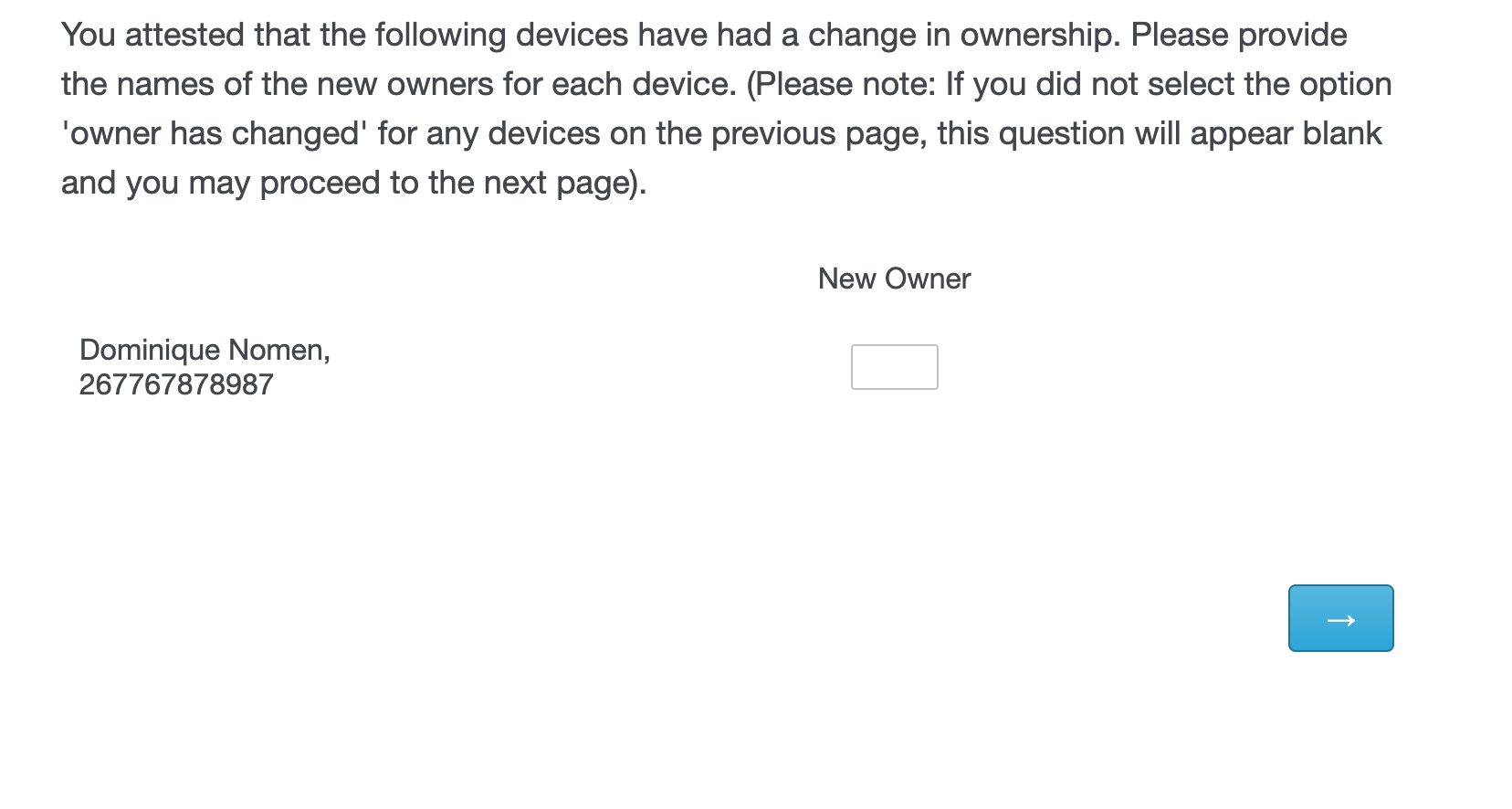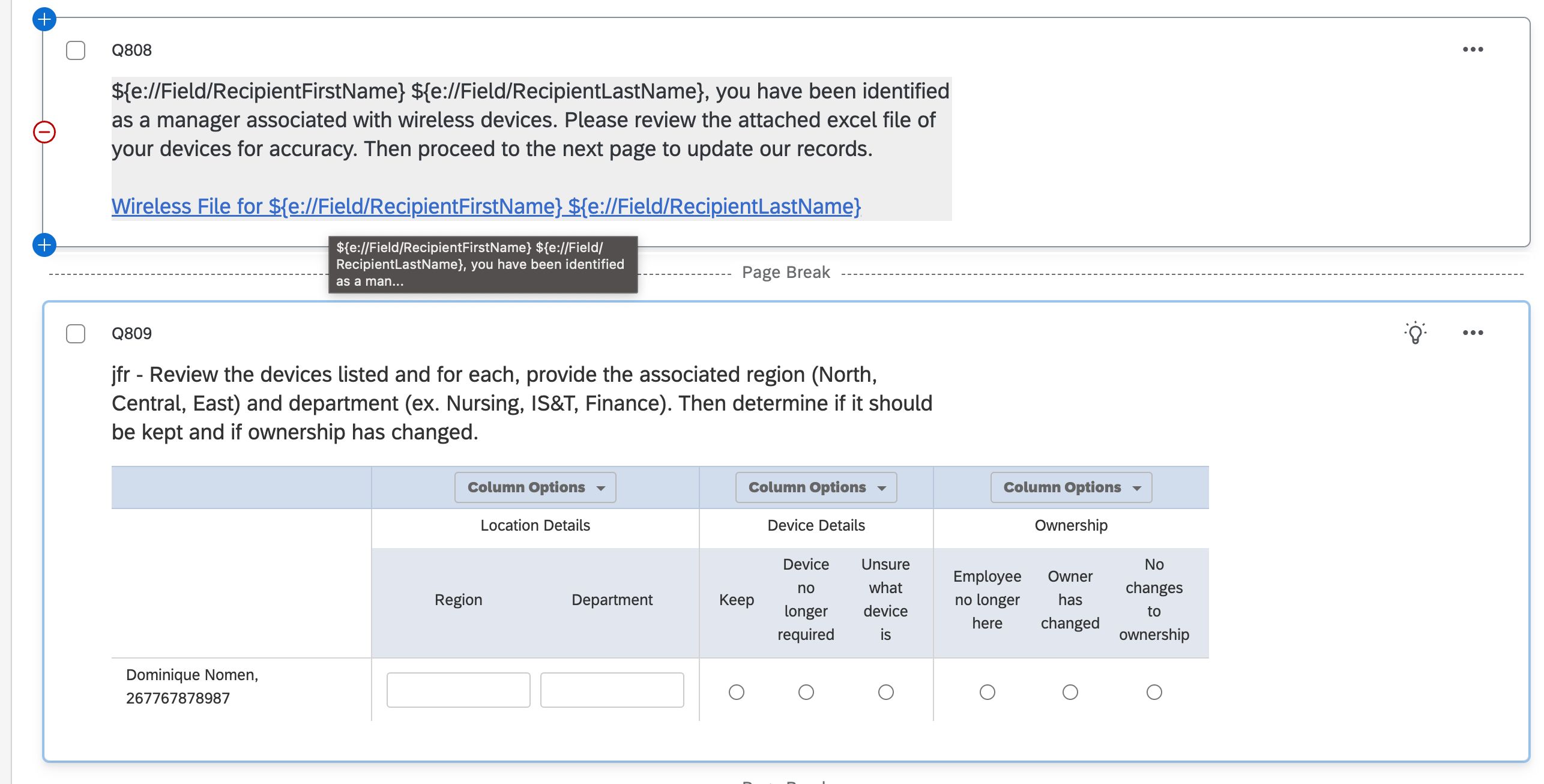I have built a survey with over 2000 blocks which are each set with survey flow logic to be displayed relative to the RecipientEmail of the respondent the survey is sent to. Each block has a unique url for an excel file holding phone numbers that have been pasted into the first questions added to each block, a list of numbers a respondent can check options for in a side by side question, and carry forward question which is populated if a respondent would like to keep a number and provides inputs for new owners of numbers to be entered into. I was looking into piping values in from excel sheets for the questions but can’t find a reliable way to loop and add. Are building an external api or using selenium.
Here are example shots of the survey -












